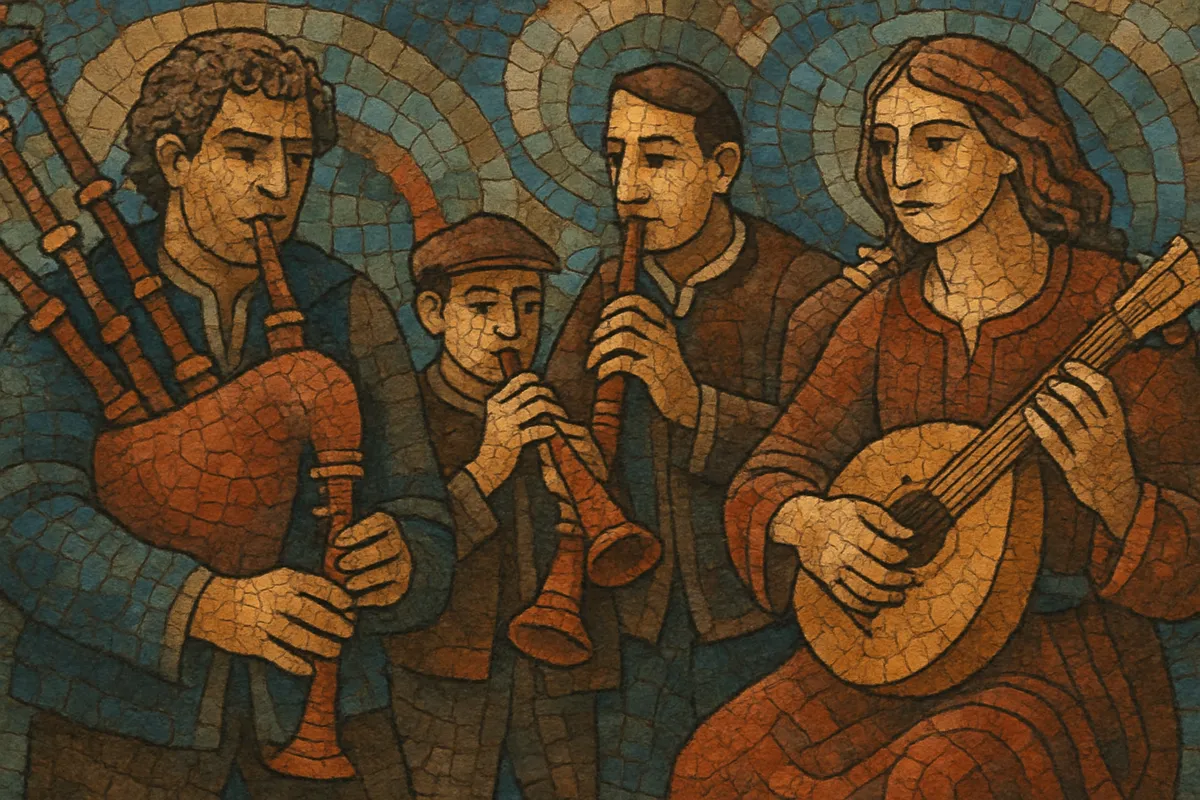Bagad (plural: bagadoù) is a modern Breton ensemble format that brings together Great Highland-style bagpipes (biniou bras), bombardes (a conical, double-reed shawm), and a full Scottish-style drum corps of snares, tenors, and bass drums.
Rooted in Brittany’s dance traditions, bagadoù perform suites that weave together airs and set-dances such as gavotte, an dro, hanter-dro, plinn, ridée, and laridé. The sound is bright, penetrating, and highly ornamented, with pipes and bombardes often playing in tight unison, hocketing patterns, or in parallel and contrary motion while the drum line provides intricate rudimental grooves.
While explicitly Breton in repertoire and modal language, the format and drill are indebted to Scottish pipe band practice. Contemporary bagadoù regularly commission new works, experiment with harmony and counterpoint for multiple pipe and bombarde parts, and collaborate with choirs, jazz groups, and rock bands, giving the tradition both ceremonial gravitas and concert-stage dynamism.
The bagad format emerged in Brittany (France) in the 1940s, inspired by Scottish military and civilian pipe bands encountered before and during/after World War II. Breton musicians and cultural organizers sought an ensemble that could carry local repertoire—especially dance music for festoù-noz—on a projecting outdoor-capable instrumentation. Organizations such as Bodadeg ar Sonerion (founded in the 1940s) helped shape standards for instrumentation, tuning, and repertoire.
By the 1950s and 1960s, the bagad became firmly established, with competitions encouraging high musical standards and the characteristic multi-movement "suite bretonne" format. The drum corps adopted Scottish rudimental technique while arrangers developed idiomatic multi-part writing for pipes and bombardes. Early flagship ensembles, including Bagad Lann-Bihoué (French Navy, founded 1952), raised public visibility at home and abroad.
The Festival Interceltique de Lorient (from 1970) offered a major platform for bagadoù and inter-Celtic exchange. During these decades, leading groups refined tuning, balance, and orchestration; they also broadened repertoires beyond strict traditional sets to include newly composed airs and medleys. Recordings, radio/TV appearances, and international tours helped codify the bagad as both a community-based and professional-facing ensemble model.
Top-tier bagadoù continue to compete in national championships, commissioning original works and expanding harmonic language. Collaborations with rock, jazz, and choral forces—and experiments with staged productions—have modernized presentation while preserving core Breton dance forms. Youth training pipelines now feed many ensembles, securing continuity and fostering virtuosic levels of ensemble precision.


